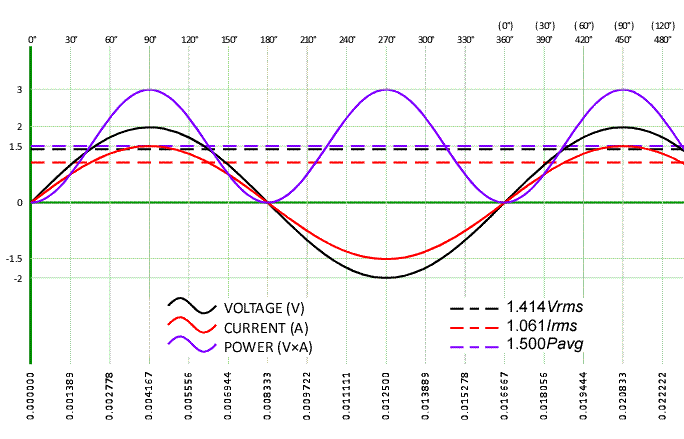OK, I now see my error, where I used 30?... so why didn't you just say so?!!! I still say you like to read your own typing... especially calcs.Nice.:roll: For some reason, your version used 30 degrees for the imaginary portion. I'm not sure where you got that from, but it is not the way I would have done it so I posted the way I would have done it.
As to my mistake, I was thinking ahead to I23 when I stuck it in there. But does it really matter in unity pf cases, as θ2? will always be the negated value of θ1? and add to 0?. Now if you want to show the difference in non-unity pf cases, by all means have at it... but please, don't just show the math. The math takes care of itself. What I'm asking you to present is premise and purpose along with the substantiating math.
What you don't understand is that you are not teaching me anything, and too blind to jump over this trivial (confirmed in your reponse to skesheshI have tried but I have not been able to get you to understand. If you feel like disbelieving everything I say just to be argumentative, at least read some of the other posts where this was explained.I started out with a conjugate because I had a conjugate in part of the equation to start with. The end result was not a conjugate. I fail to see why this is so hard for you to understand.If you mean I don't understand you, you are correct. You are posting things without them being substantiated. Some of them are so strange, that I would say you either don't understand what you are doing or are purposely posting errors just to argue.
If it is the former, I will be glad to help you learn something. If you don't want to listen to me, there are plenty here that could teach you as well and I think you would be better for it.
If it is the latter, I'm really not interested in the entertainment value at this point and it really brings no value to this forum.
Let me sum it up in calc form:
VA/V@θ=I@-θ*
I@-θ*≈I@θ
VA/V@θ=I@θ
...where "≈" is used for the equal and congruent symbol (three-line equal symbol)I@-θ*≈I@θ
VA/V@θ=I@θ
Last edited:

